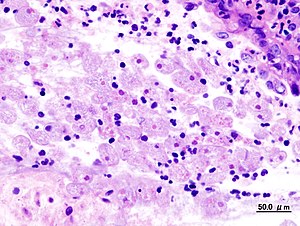[amazon_link asins=’B001L7X1BQ,B001UJH8Y6,B00JQTSBES,B0001TIDJA,B0014APLBS,B00ZTXDE9M’ template=’ProductCarousel’ store=’finmeacur-20′ marketplace=’US’ link_id=’eeed5c0c-f73c-11e6-a837-2b5489bb8d9d’]
Botanical Name:Artemisia annu
Family: Asteraceae
Genus: Artemisia
Species: A. annua
Kingdom: Plantae
Order: Asterales
Common Names:Sweet Wormwood, Sweet Annie, Sweet Sagewort or Annual Wormwood. Annual sagebrush , Chinese wormwood, qing hao
Habitat :Sweet Wormwood is a common type of wormwood that is native to temperate Asia, but naturalized throughout the world.
Description:
It has fern-like leaves, bright yellow flowers, and a camphor-like scent. Its height averages about 2 m tall, and the plant has a single stem, alternating branches, and alternating leaves which range 2.5–5 cm in length. It is cross-pollinated by wind or insects. It is a diploid plant with chromosome number, 2n=18.Sweet Wormwood has leaves that are mildly perfume scented.
CLICK & SEE
Medicinal uses:
Medicinal properties: bitter febrifuge antimalarial antibiotic
Parts Used: Leaves
Sweet Wormwood was used by Chinese herbalists in ancient times to treat fever, but had fallen out of common use, but was rediscovered in 1970’s when the Chinese Handbook of Prescriptions for Emergency Treatments (340 AD) was found. This pharmacopeia contained recipes for a tea from dried leaves, prescribed for fevers (not specifically malaria).
Extractions:
In 1971, scientists demonstrated that the plant extracts had antimalarial activity in primate models, and in 1972 the active ingredient, artemisinin (formerly referred to as arteannuin), was isolated and its chemical structure described. Artemisinin may be extracted using a low boiling point solvent such as diethylether and is found in the glandular trichomes of the leaves, stems, and inflorescences, and it is concentrated in the upper portions of plant within new growth.
Parasite treatment:
It is commonly used in tropical nations which can afford it, preferentially as part of a combination-cocktail with other antimalarials in order to prevent the development of parasite resistance.
Malaria treatment:
Artemisinin itself is a sesquiterpene lactone with an endoperoxide bridge and has been produced semi-synthetically as an antimalarial drug. The efficacy of tea made from A. annua in the treatment of malaria is contentious. According to some authors, artemesinin is not soluble in water and the concentrations in these infusions are considered insufficient to treatment malaria. Other researchers have claimed that Artemisia annua contains a cocktail of anti-malarial substances, and insist that clinical trials be conducted to demonstrate scientifically that artemisia tea is effective in treating malaria. This simpler use may be a cheaper alternative to commercial pharmaceuticals, and may enable health dispensaries in the tropics to be more self-reliant in their malaria treatment. In 2004, the Ethiopian Ministry of Health changed Ethiopia’s first line anti-malaria drug from Fansidar, a Sulfadoxine agent which has an average 36% treatment failure rate, to Coartem, a drug therapy containing artemesinin which is 100% effective when used correctly, despite a worldwide shortage at the time of the needed derivative from A. annua.
Cancer treatment:
The plant has also been shown to have anti-cancer properties. It is said to have the ability to be selectively toxic to some breast cancer cells [Cancer Research 65:(23).Dec 1, 2005] and some form of prostate cancer, there have been exciting preclinical results against leukemia, and other cancer cells.
Mechanism:
The proposed mechanism of action of artemisinin involves cleavage of endoperoxide bridges by iron producing free radicals (hypervalent iron-oxo species, epoxides, aldehydes, and dicarbonyl compounds) which damage biological macromolecules causing oxidative stress in the cells of the parasite.[citation needed] Malaria is caused by Apicomplexans, primarily Plasmodium falciparum, which largely resides in red blood cells and itself contains iron-rich heme-groups (in the from of hemozoin).
Precaution:During pregnancy this herb should not used.
Other uses:
In modern-day central China, specifically Hubei Province, the stems of this wormwood are used as food in a salad-like form. The final product, literally termed “cold-mixed wormwood”, is a slightly bitter salad with strong acid overtones from the spiced rice vinegar used as a marinade. It is considered a delicacy and is typically more expensive to buy than meat.
Disclaimer:The information presented herein is intended for educational purposes only. Individual results may vary, and before using any supplements, it is always advisable to consult with your own health care provider.
Resources:
http://en.wikipedia.org/wiki/Artemisia_annua
http://www.crescentbloom.com/Plants/Specimen/AO/Artemisia%20annua.htm
Related articles
- High dose of oxygen enhances natural cancer treatment (eurekalert.org)
- Plant Extract May Fight Progressively Resistant Malaria Parasite And Mosquitoes That Carry Them (medicalnewstoday.com)
- High dose of oxygen boosts natural cancer treatment (news.bioscholar.com)
- High Dose of Oxygen Enhances Natural Cancer Treatment (wsunews.wsu.edu)
- Canadian researchers discover malaria breakthrough (nationalpost.com)
- Canadians make malaria breakthrough (canada.com)
- Natural compounds could pave way for novel anti-malaria drugs (news.bioscholar.com)
- Natural compounds: the future of anti-malarial treatment (eurekalert.org)
- Seaweed may provide new drugs to fight the malaria parasite (guardian.co.uk)
- Newer antimalarials more effective than quinine against severe malaria (physorg.com)

![Reblog this post [with Zemanta]](https://i0.wp.com/img.zemanta.com/reblog_e.png?w=580)




















